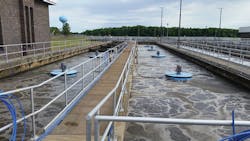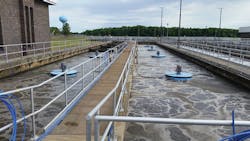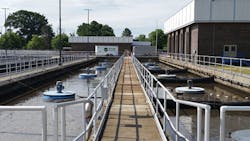Introduction to Dissolved Oxygen Delivery using the PrO2 System
By Steve Myrick and Jeffrey Creech, Ph.D.
Thirty years ago, the ability to dissolve high concentrations of gas into liquids was known, but bulk depressurization would result in a large amount of bubbling (outgassing). In the early 1990s, Dr. Richard Spears at Wayne State University invented a means of delivering dissolved gas from pressurized conditions to lower pressure (ambient) conditions without significant bubbling.
A joint effort between Wayne State University and TherOx developed the system concept that evolved into the PrO2 System. The system was designed to deliver large amounts of dissolved oxygen into water for various water treatment applications. The system produced flow rates over 1,000 times greater than the range of medical applications, but the essential components remained the same. This technology was licensed to Blissfield Manufacturing, who refined the system into the commercial PrO2 System that exists today.
The PrO2 System for water treatment delivers dissolved oxygen in an aqueous solution at higher concentrations than can be achieved at atmospheric conditions. This system has an operational range up to 15 gpm at an operating pressure of 300 psig. It is capable of delivering over one standard cubic foot of oxygen per minute as a dissolved gas. These levels can be used in municipal water treatment facilities as well as in agriculture, and levels of dissolved oxygen delivery can be further scaled up if needed.
Dissolved Oxygen Delivery Versus Fine Bubble Aeration
This delivery system has an advantage over fine bubbling systems for raising DO levels in that the delivered oxygen is already in dissolved form. Fine bubble technologies attempt to minimize the kinetics of dissolving gas into water by making finer and finer bubbles but cannot fully achieve saturation equilibrium. Each bubble is a liquid-gas interface, and the dissolved oxygen concentration is limited by the oxygen pressure within the bubble. If the bubble is in an open tank, the oxygen pressure is about 8 ppm for an air bubble and about 40 ppm for an oxygen bubble. The size of the bubble will not alter the saturation concentration; fine bubbles only increase the rate of saturation due to their relatively greater surface area. Some amount of gas will always be lost when bubbles reach the surface. That is because bubbles, no matter how small, will always have buoyancy, and buoyancy will push bubbles to the surface. Smaller bubbles will rise less quickly, but making smaller bubbles requires more energy.
Dissolved oxygen from the PrO2 system is not limited by ambient saturation levels because the delivered oxygen is already dissolved and will experience no effects of buoyancy because it is not a bubble. It can travel through the water by diffusion or mixing, thus increasing oxygen concentrations in other zones.
Greener Planet Systems is exhibiting at WEFTEC.17, Booth 6037. For more information, visit greenerplanetsystems.com.


